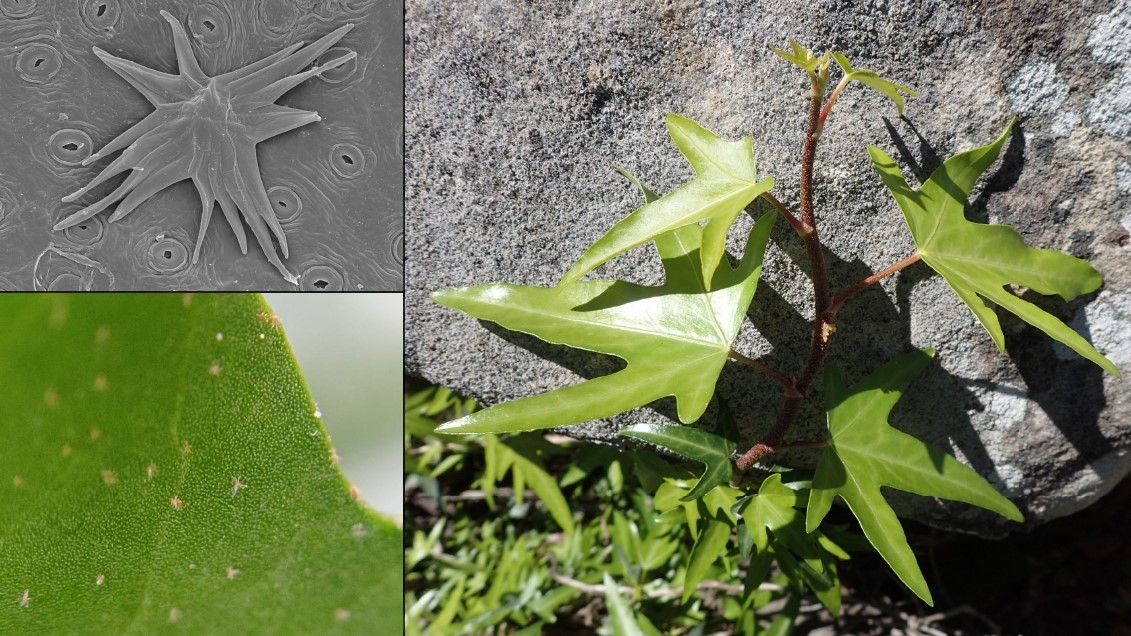According to a recent study conducted by the Autonomous University of Madrid (UAM) Significant errors have occurred in the identification of European ivy. As an example, the case of Great Britain, where confusion can reach 38%, and Spain, where confusion is 27% are cited.
Las ivy, Known for their glossy, evergreen leaves, they are ubiquitous climbing plants in woodlands and gardens. However, few know that they exist 12 different types of ivy, seven of which are European. Three of these species are found in the Iberian Peninsula and one of them, The Iberian ivy (Hedera iberica) is exclusive to this region.
The PlantBEE (Land Plant Biogeography, Ecology and Evolution) team from the Autonomous University of Madrid (UAM) has been conducting research on these plants worldwide for more than twenty years. One of the most important objectives has been determine the exact distribution of the species.
During these years they did that assessed ivy collections in scientific institutions and universities in various countriesrecording the original name of each sample and comparing it with Virginia Valcárcel’s identification, world ivy specialist and member of PlantBEE.
In a recent work published in Scientific Reports, Researchers from this team discovered a high error rate that varies by region and species. According to their results, the United Kingdom and Spain have the highest error rates, with 38% and 27% of samples misidentified respectively. The most confused species are the Atlantic ivy (Hedera hibernica, 55%) and the Iberian ivy (Hedera iberica, 36%).


“These confusions are usually due to many of these plants are incorrectly identified as common ivy (Hedera helix)regardless of their similarity. We believe that this pattern is due to both misperception and difficulties in correctly identifying the ivy”, say the authors of the work.
Fallacy of ivy
Until twenty years ago, people believed that in Europe only common ivy existedan idea that is widespread even within the scientific community. This misunderstanding has led to many ivy samples were incorrectly identified as H. helix without a detailed analysis of its characteristics.
Furthermore, the European ivy They are not easily distinguished by their leaves, flowers or fruits, but rather by small star-shaped hairs that require specialized training for their correct interpretation. “One of our current goals is correct the misconception that there is only one ivy species in Europe and teach both professionals and amateurs to distinguish the species,” emphasize the authors of the work.
Citizen science
Collaborative projects have emerged from this in recent decades involving citizens in the documentation of biodiversity. Platforms like iNaturalist allow you to upload photos of species related to their geographic location. While this information is valuable, in the case of ivy It is not possible to use this data for scientific research due to difficulties in confirming the species from conventional photographs.
“For this reason,” says Virginia Valcárcel, “we recommend it each ivy plate contains a detailed photo of the stellate hairs, taken with a field magnifying glass or a macro camera. “Accurate documentation will help to more accurately predict the future of these species in light of projected climate changes.”
Detailed knowledge about the Distribution and characteristics of plants in general, and ivy in particular, are crucial for the conservation of biodiversity. “With the cooperation of the scientific community and citizens, we can make progress in understanding and conserving these fascinating plants,” the researcher concluded.
In short, thanks to the fact that both citizens and scientists have decided to work together, it is possible that the identification errors made with European ivy, with more attention to their most distinctive features.

